Ron's Story
Coming Home to Mandeville, Louisiana by Way of Houston and LSU
Chapters
EPR in Houston, 1977-1978 |
Coastal Studies at LSU, 1978-1982 |
EPR in Houston, 1977-1978
We arrived in Houston at the beginning of the summer in 1977 for me to begin work at EPR (Exxon Production Reseaarch Company). Employees of Exxon had to stay 5 years in order to be vested, i.e., a financial enticement (seductive blackmail) to stay with the company as a career. It didn't work! I stayed one year and was gone by the start of the next summer. My brief tenure probably resulted in a company policy to never again hire a Berkeley graduate (LOL). But I did enjoy working with my compatriots at EPR as a research scientist. Ed Pittman, well-known for his research in reservoir diagenesis, was there and we later published a paper together. There was a major difference from my experience at working for Union Oil in Lafayette as an exploration geologist. Long "drinking" lunches at the local Petroleum Club and coming back to the office wasted were taboo. My EPR boss was Kate Hadley who had gotten her Ph.D. two years earlier in geophysics at MIT. She was the first and only female boss in my career. I thought she was wonderful. I was hired to do thermodynamic modeling of potential reservoirs ahead of the drill, and Kate left me alone to do that. The office talk was that her boyfriend at the time was an offshore driller, a notably tough character who could handle her. I always wondered if that was true.

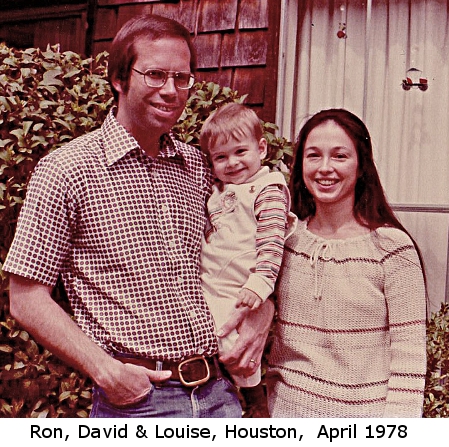
Back at EPR on Buffalo Speedway, my office was enormous but had no windows which transformed it into a cave. I used Mark Reed's SOLVEQ programs with the completed parts of my program REACT to model diagenesis in potential reservoirs. The modeling started with an initial depositional mineral assemblage and pore fluids, and allowed changes in pore fluids to account for fluid migration, to predict the formation of minerals during burial to reservoir conditions. I then had to estimate (guess - lol) at the final porosity and permeability. In tandom, EPR started an experimental program in reservoir diagenesis and contracted with Bill Seyfried (now at the University of Minnesota) to supply one of his titanium-based reaction systems. EPR sent me out to gain field experience when nearby wells were logged and that was fun. Then they made the fatal error (career-wise) of sending me to college campuses to interview prospective recruits.
Although I kept my opinions to myself, I didn't think the thermodynamic modeling was at a stage of being very useful to the oil industry. The reservoir system was rock-dominated, meaning that the reservoir fluids were not important in determining the final equilibrium mineral composition. Knowing the chemical composition of the sediments at deposition allowed prediction (without modeling) of the final equilibrium mineral composition with a simple phase diagram. But the reservoir temperatures were not high enough for the reaction kinetics to reach the equilibrium assemblage. The modeling followed the reaction path towards the equilibrium assemblage EPR wanted to predict the formation of metastable clays: kaolinite, halloysite and various solid-solution clay minerals (smectites, illites, and chlorites) along the reaction path. These metastable clays have an enormous effect on both reservoir permeability and porosity preservation. However, the thermodynamic stabilites of the solid-solution clays had not been measured and had to be estimated and their formation was controlled by unknown reaction kinetics not built into the modeling. I was interested in deriving solid solution models of their thermodynamic stabilities, an academic pursuit. And since Kate left me alone, I happily started working on a regular-solution illite solid solution model. This simple model assumed random placement of atoms on lattice sites and then summed the computed site enthalpy interactions along with the configurational entropy to estimate the thermodynamic stability. The estimated site interaction enthalpies were limited in magnitude because of the assumption of random mixing, a serious flaw in the model but still an advancement over the empirical procedures used at that time. I published the illite solid solution model Geochimica et Cosmochimica Acta and gave a talk on it at the 91st Geological Society of America (GSA) Annual Meeting in Toronto in 1978.
EPR was not without interesting characters. Donald Peaceman, a world-famous mathematician, was at EPR. He and Henry Rachford (at nearby Rice University) had developed the Peaceman-Rachford ADI finite difference method for solving partial differential equations. The method is simple to apply and incredibly useful in numerical modeling, and I used it throughout my career to model two-dimensional fluid flow and diffusion processes. An EPR colleage of mine in the Reservoir Section was building a numerical depositional model, following known empirical changes in porosity and permeability in sediments through burial. She had a numerical problem and decided to ask Donald Peaceman for help, asking me to go with her. In his office, she described the problem to Dr. Peaceman and he suggested some possibilities. She then asked how long it would take to work out the solution. Peaceman looked at her thoughtfully and said slowly "For me, an afternoon. For you, a lifetime!" We left his office, gathered our colleages together and went out to get hammered to restore "lifetimes" of self confidence. But it was funny and so much like the academic give and take at Berkeley.
In the spring of 1978, EPR sent me to recruit at LSU. It was great to be back on my old college campus. I talked with my old professors and quietly went looking for an academic job. By the end of the recruitment session, I had a soft-money (needed grants to fund my salary and research) offer from James (Jim) Coleman, the Director of Coastal Studies Institute (CSI) as a chemical oceanographer. Jim Coleman was originally from Calcasieu Parish in SW Louisiana, a "dynamic and resourceful" Cajun who is a legend at LSU and with Harry Roberts, Bill Wiseman, and Oscar Hue built CSI into a research powerhouse. Between the four of them, they probably published 20 papers a year. Jim and Harry were thin, wiry, and tough, built, I thought, like a pair of greyhounds. As a teenager, Jim had worked as a duck hunter's guide in the Calcasieu and Vermillion Parish marshes. I had hunted some of the same marshes near Pecan Island and Grand Chenier and felt a kinship with him. Chemical oceanography was a field in geochemistry but not my speciality. Jim Coleman would initially support me off his grants and I would take the position and see where it led. Louise would be ecstatic to live in Baton Rouge, and Cellie (my Mother) would be overjoyed to have us back in the state. Back at EPR I said my goodbyes. EPR requested I sign a letter saying I would not do anything geochemical, related to my work at EPR in my future career. I had to laugh at that. What did they expect? Was I to give up my Ph.D. in geochemistry? My friend Bill Seyfried, who EPR contracted to build the experimental diagenesis research equipment, had been submitted a contract requiring that he never again provide similar equipment to any other organization. I removed that clause from his contract. EPR was certainly persistant in their no-compete efforts. The next person who occupied my office was a parapelegic from UNO (University of New Orleans) with an M.S. degree in Geology whose verbal communication was on par with that of Stephen Hawkin's verbal communication with ALS. Bill Seyfried called my old phone number, not knowing I was gone. He said all he could hear were moans at the other end. He knew I was planning on leaving and told me later he thought they cut my vocal cords in retaliation. Bill is a funny guy!
Return to Top
Coastal Studies at LSU, 1978-1982
In Baton Rouge, our first order of business was to find a place to live. We decided to buy a surbuban ranch-style house in Iberville Terrace on Rue Crozat, a mile south of LSU, but we lacked the $20,000 down payment. Both Louise's Dad Wally and my Mom Cellie had earlier come up with $5,000 each to help us towards the end of my stay at Berkeley when my GI Bill ran out. So of course we considered them to be our bank. Louise asked Wally to come up with a $10,000 loan. Wally had never forgiven me for marrying his daughter and turned her down. Cellie laughed when she heard this, and said she would write us a check for the entire $20,000. 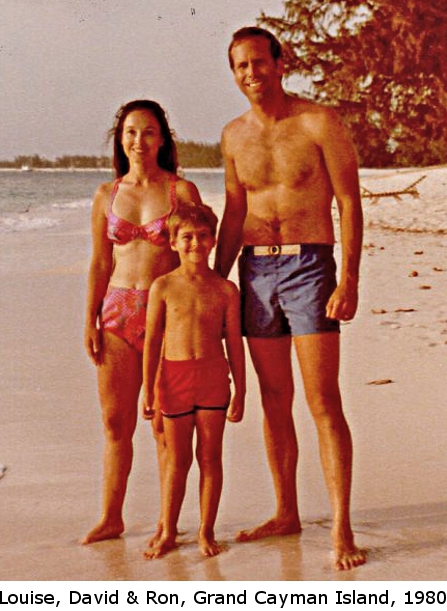
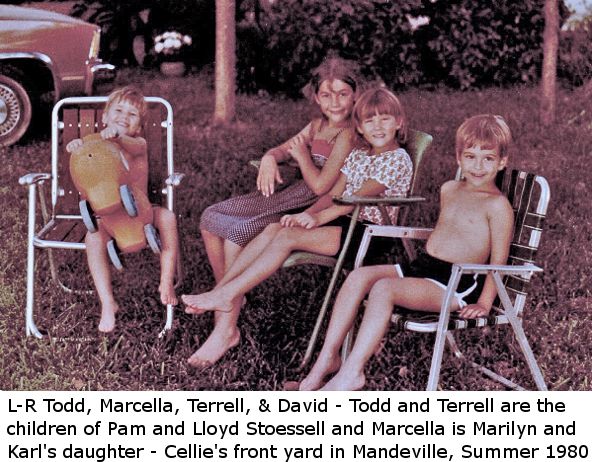
Baton Rouge was halfway between Crowley and Mandeville, and I would often go to Crowley to help Cellie with her house and yard and to Mandeville when problems arose with her properties. Marilyn would come from Europe a couple of times a year and stay a month with her and Cellie spent the summer with her in Wiesloch, Germany in 1981. During one of Marilyn's Louisiana trips, Cellie had surgery in Lafayette to remove her gall bladder but soon went into constant pain in her hospital bed. 
During this time, we were near the end of the Arnett Puttman lawsuit. My grandfather Ernest had bought about 3,500 acres of land at tax auction at the end of the 1930s in two tax sales. There must have been something wrong with the first tax sale because he purchased it again at a second tax auction the following year. The land was in many different parcels and they were poorly described. Upon my grandmother's death in 1955, the family had obtained quitclaims from the heirs of the people who had originally owned it. However, they missed one of the heirs and a group of land sharks purchased a quitclaim from that heir and then filed a lawsuit in the late 60s, saying that poor descriptions of the property rendered the tax sales invalid. The Prieto family had already split the land among the four branches with the exception of 281 acres in parcels along Sharp Road that were too valuable to be easily divided. That land along Sharp Road was easily worth more than a million dollars in the 1960s. Cousin Ernest represented his father Clay Prieto and his uncle Preston Prieto in a deal that gave his law firm 10% of their share of their inherited Arnett acres not lost to the plantiffs. Initially, Judge Edmond Reggie in Crowley represented my mother Cellie and Aunt Marion. The family won in court and on the plantiff's appeal. But the plantiffs just filled a new lawsuit and we were back again in court. Following the death of my father, Cellie realized that Judge Reggie was not adequately representing her interests and asked Charles (Slew) O'Neill, my father's old roommate from the 1930s in New Orleans to represent her. Slew was a successful oil field attorney and out of friendship with my father, he took the case. Cousin Ernest resented this because he wanted to represent the entire family. He persuaded Aunt Marion to allow him to represent her for a $10,000 fee which was a minor sum for her actual legal costs. He wanted a settlement, telling the family that otherwise the lawsuits would never end. I knew his rimary interest was for the case to be settled in order to be paid for his legal work in land, both from his family and from Uncle Preston's family. Representing three fourths of the defendants, Cousin Ernest forced a settlement that gave the plantiffs 261 acres of the 281 acres of the undivided property on Sharp Road. I was in Berkeley at the time, and we exchanged bitter letters as I tried to prevent a settlement. Uncle Clay later confided in me that his son's actions were driven by the land due him with the settlement. Whatever, the legal work on the settlement was sloppy. Slew O'Neill said it would just lead to more lawsuits. For years Slew went through the documents, amending them to clarify the settlement and forcing the addition of other documents to plug loopholes in order to guarantee the settlement would represent the last lawsuit in this matter. This delay drove Cousin Ernest nuts. When the day of the settlement came in February, 1981, I drove down from Baton Rouge and met Slew at the St. Tammany courthouse. Although we had communicated for years, I had never actually met him before. Cousin Ernest treated Slew and me like outcasts in the courtroom. Later, as we walked out of the courthouse towards his car, I pulled out the family checkbook to pay him for years of legal work. He was (I think) 79 years old and stood tall, slim, and straight. He looked at me and said "Ron, I did this for Al. I owed him one." Slew climbed into his car and drove off, while I watched, wondering at the deep bond he felt for my father. I never saw him again.
The lead lawyer for the plantiffs in the Arnett Puttman lawsuit had been Charles McHale, a famous real estate attorney in Southeast Louisiana. Nearly twenty years later, I went to him for help in dealing with Cousin Ernest on a "new" family real estate encroachment problem on Hwy 59 in Glendale Heighte Farms. Betty Anderson, the wife of Bob Anderson our family lawyer, came with me. McHale turned out to be an old Southern Gentleman and Betty was a charming old-school Southern lady. They struck an instant bond, making our mission much easier. McHale talked of the landsharks in the Arnett Puttnam case, saying they had to quickly sell the 261 acres they received in the settlement to pay the enormous legal fees that had accumulated over 15 years. Apparently, the plantiffs did not make much off the settlement. As for the "new" family real estate problem, McHale said the Prieto family could not win in court because Cousin Ernest had already sabatoged the case by providing written acknowledgment of their 30 year possession. However, I paid him $500 for a letter threatening a lawsuit over the matter, and McHale's reputation was such that the Prieto family received a $5,000 monetary settlement of which Cousin Ernest took his 1/12th share (lol).
Around 1980, the Cretaceous-age Tuscaloosa Formation was being drilled in the Baton Rouge area for natural gas. The formation was deep (up to 20,000 feet) at a high enough temperature (200 degrees C) to crack (convert) any liquid oil to natural gas. At those depths the porosity and permeability of the sandstones should have been reduced so much that extraction of the natural gas would be difficult to impossible. Surprise! Natural gas was produced in enormous quantities from this formation. Alan Thomson, a Ph.D. Shell oil geologist in New Orleans, noted rims of chlorite had formed around the quartz grains and seemed to have prevented much of the "expected" destruction of porosity and permeability. (Alan and I later worked together for several years defining reservoir fluids that could migrate aqueous aluminum away from reservoirs, allowing the creation of secondary porosity and permeability.) There was only a little oil and gas Tuscaloosa production further east in St. Tammany Parish, just some natural gas production in the Rigolets area. The problem is the sandstone reservoirs disapeared to the east, being replaced with thick shales. Today, those shales are ideal for fracking but this was before fracking processes had been developed to produce from shales.
St Tammany Parish had so few drilled wells there was a high possibility of "as yet" undiscovered sandstone Tuscaloosa reservoirs in the area. In early 1981, I wanted to lease the family lands for a Tuscaloosa "Play". Cousin Ernest had control over the family properties with the exception of Cellie's land. So I called him about my plans. He dismissed them saying his close friend Walter Sierra, a lease broker, had already tried and failed with his oil field contacts. But I had my own contacts, called both Walter and Ernest, telling them I would see if there was any interest among them. Those phone calls spurred Ernest to push Walter again, and within a month Walter put a deal together that included leasing the family lands and apparently also used his own money. Cellie received about a hundred thousand dollars for a one year lease of which she paid me 10% for pushing the deal forward. Funding for actual drilling wells was not obtainable by Walter and the "Play" collapsed in St. Tammany Parish within a year. It is a truism among independent oil geologists and lease brokers that you sell the prospect to investors, keeping a share for your profit, and never put your own money in it. Sadly, Walter Sierra took the gamble and invested his own money, lost everything and committed suicide.
The family problems came from all directions. Cellie and her sister Marion had been extremely close growing up but they had now developed a love-hate relationship. With age, Marion had developed an afternoon drinking problem, making it difficult dealing with her. There was an undeveloped city block in Mandeville, Square 86, that Cellie owned an undivided 3/4th interest and Aunt Marion owned an undivided 1/4th interest. In the early 60s, the City paved around the square and collected from the adjacent landowners for the cost of the paving. Marion refused to pay and Cellie got stuck with the total bill (to prevent a lien) which irritated her to no end. And Cellie patiently waited for her revenge.
In 1978, Uncle Jimmy Moore had died by heart attack on vacation in Lebanon. There was an unsettled debt related to the old Moore-Stoessell Studabaker business that had collapsed in the late 50s. When my father Al left the business around 1955, Jimmy ran it for several years until it closed. But Jimmy had to borrow money from his family because the business wasn't making enough to cover his salary. That money was a debt on the business and Al was still his partner. Afterwards, the building was rented and most of the income went for maintenance. After Al died in 1971, Jimmy handled the rental of the building until it was eventually sold. After Jimmy died, Marion approached us about paying the Moore family half the money borrowed to pay Jimmy's salary. We knew how much had been borrowed and sent checks. The checks were returned saying the debt was actually much more because there were unpaid expenses related to the old Moore-Stoessell Building. Marion produced a letter which she said her daughter Marge had found "serendipitously" in Jimmy's typewriter upon their return from Lebanon with his corpse. The letter stated a new sum for the debt and was written, supposedly, by Jimmy in case he died on their vacation. Knowing Marian, We assumed she had written the letter herself to bolster her case. And we had not received any accounting of the rental income since Al died. So we asked for an accounting of that money. Aunt Marion would not provide that and threatened a lawsuit through her attorney Robert (Bob) Anderson in Covington. Then, several years later, one afternoon when Cellie was visiting Dale Gale, an eccentric British lady and close friend in Mandeville, she received a call from Bob threatening an immediate lawsuit. I guess Cellie didn't expect to hear from a lawyer and she suffered a stroke. Dale called me in Baton Rouge and I drove down, took Cellie to her lakefront cottage. She recovered completely over the next several days. I called Bob Anderson, told him what happened, and said under no circumstances was he to ever call her again. And to his credit, he never did. And those two debts have never been settled to this day. Years later, after both Cellie and Marion died, on the advice of Marion's son David Moore, the Stoessells came to relie on Bob Anderson as our family attorney in clearing property titles. Bob's family and ours became close friends before he died of a heart attack at a New Year's Eve party about the year 2000 - strange ending isn't it? Betty passed several years later after Bob's death. Bob was a Southern Gentleman and his wife Betty was a sweet, compassionate "Southern Lady" who worked with him. Cellie would have loved Betty if she had known her. Betty would look at me and solemnly respond "Absolutely" in agreement when I put forward a rediculous position (lol). It was her gentle way of putting me in my place. I do miss her sweet Southern Charm!
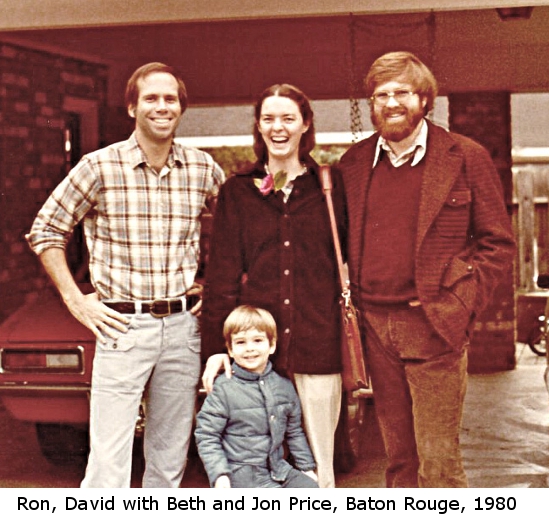
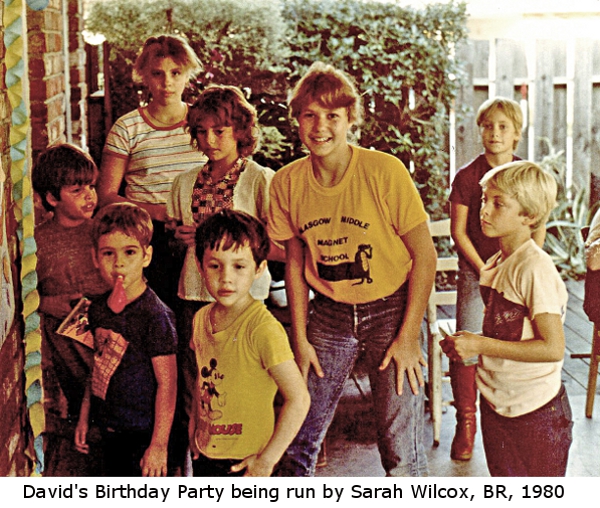
Back on campus, I taught chemical oceanography in Coastal Studies. Ocean chemistry is the end product of chemical weathering processes on land, the chemical reactions on the seafloor and dissolution of shells of marine organisms, gas exchange with the atmosphere, and the biological effects of marine organisms and human activities. The course was introductory graduate-level and included seniors and graduate students from many different departments. This was good experience for my later teaching career. The LSU athletic department actively followed the progress of their scholarship students. I remember being pressured for a better grade for a wide receiver on the football team (lots of luck) and one "pretty" female student who served as an assistant(???) to one of the higher-up LSU administrators. She had a campus-wide reputation of manipulating professors for a better grade, and I quickly learned to avoid any private conferences with such students.
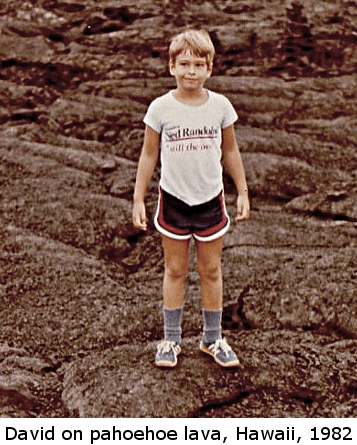
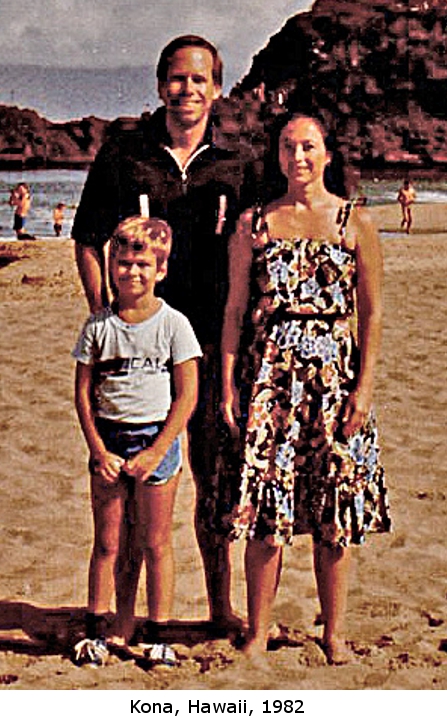
As at Berkeley, the Geology Department was split among faculty groups who did not get along with each other. Jeff Hanor, my former M.S. major professor, regarded Clyde and Ray as scientific competitors and me with suspicion. I tried to work with Jeff but he soon told me that LSU wasn't big enough for two geochemists, eliminating any possiblity of working together. Jeff's attitude is a common problem at universities. During their careers, professors often build little kingdoms in their research areas and try to squash any new blood that might threaten their power structures. Carried to extreme, the process works against making significant scientific advancements because those aren't made in a vacuum but depend on sharing ideas among equals.
Although Jim Coleman was supporting me off his grants, I needed my own funds. I initially talked with Dr. Joesph (Joe) Martinez, the Director of the Institute of Environmental Studies, about subcontracting my geochemistry labratory to run quality control on water sample analyses being done elsewhere for them. The water samples were of fluids in and adjacent to Louisiana salt domes being considered for storage of radioactive wastes. The idea was to look for evidence of fluid movement across the salt domes, i.e., would the domes provide an isolated environment for radioactive wastes. Joe responded by looking at me carefully and saying "Ron, if I get the samples reanalyzed, the analytical results are not going to be identical. I won't know which ones to believe are correct?" I didn't know whether to laugh or cry at that answer. The validity of scientific results depends upon outside reproducibility of those results, a concept which apparently escaped the Director.
Eventually, I received a small grant from AGRICO to do sulfur dioxide solubility studies which filled my lab with horrible odors. Then Charles (Chip) Groat, head of the Louisiana Geological Survey, provided funds to measure methane solubilities. Pore fluids in geothermal reservoirs were saturated with methane which is an important energy source. However, there was little experimental data other than in distilled water. My measurements were not under reservoir conditions, but at 25 degrees C and 1 bar pressure in a variety of different salt solutions and in clay slurries. These "salting-out" data could then be extrapolated to higher pressures and temperatures of reservoirs. Patricia (Patsy) Byrne, the wife of John Wells who was a Ph.D. student of Jim Coleman, ran the geochemistry labratory. I enjoyed working with her. Patsy was from North Carolina and told me her stories of growing up in the Carolinas, stories that I never fully believed until I later moved to Appalachia. One of those stories was the predictable, according to her, motorcycle deaths of her two "wild" brothers, which still fills me with sadness over the shortness of life. Together we did the solubility measurements and published the single-salt data and multi-salt data in Geochemica et Cosmochimica Acta and the clay slurry data in Clays and Clay Minerals. We also gave a talk on the results at the 94th GSA Annual Meeting in Cincinnati in 1981 and the 95th GSA Annual Meeting in New Orleans in 1982. I think our measurements were the most accurate experimental data of my career. Patsy and John later went back to North Carolina and then to Virginia where John has had a distinguished career as a coastal marine scientist. Last I heard of Patsy, she was part of a Carolina Bluegrass Band, playing the fiddle(?). She was an "all Carolina" Irish girl, and I wish I could see her perform.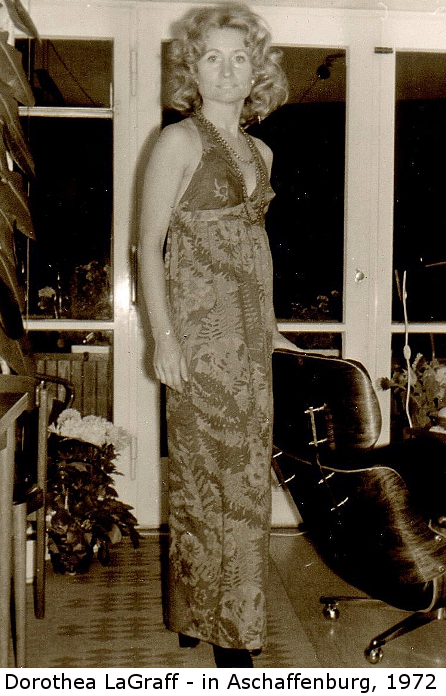
During the first year back in Baton Rouge, Dorothea LaGraff, my friend from my military days in Germany, called me one day from New Orleans. She and her husband Dieter were visiting the city, and I drove down to show them some of the local attractions, i.e., Bourbon Street. Dorothea was beautiful and "full of life" as usual but Dieter was not fun to be around. Dorothea's many close friendships with former GIs had gotten to him, and I was one of those friends. I left that night and drove back to Baton Rouge, thinking I would probably not see her again. But the next morning, I received a phone call from her. Dorothea was at the Baton Rouge bus station and had come up to see me to apologize for his behavior. We spent the afternoon together in one of the city parks, talking about our lives, and were closer than ever when she left. Like Esther, she was a soulmate of mine. Our paths have rarely crossed but we have stayed in touch. She made yearly trips to America to visit friends, and I met her again in San Francisco in 1981 (when giving a talk at AAPG) and again in New Orleans in 1982 and 1990 and several times in Germany when teaching summer school in Innsbruck. For support, Dorothea had wonderful friends. One of them, Charles Tapman, an ex-military friend of mine in Aschaffenburg, was her intellectual equal and emotional soulmate but died young in the early 80s. Dieter could not satisfy her inquisitive spirit. Back in Germany, he became increasing unhappy, they eventually separated, and Dieter sadly died alone. His death caused great sorrow for their son Tillman who later committed suicide. All of this happened in one tragic, fragile chain of human events. But Dorothea survived the emotional turmoil and lives today in Germany near their other son Fritz and his family.
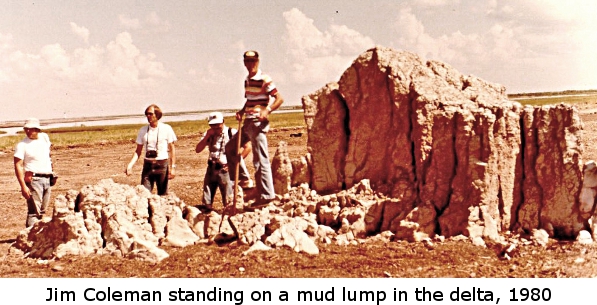
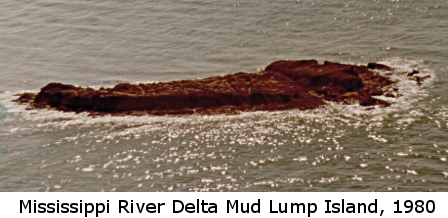
Tied in to the topic of reservoir fluids was the effect of aqueous carbon dioxide and organic acids in precipitating clays and mobilizing aluminum in reservoir rocks which affected permeability and porosity. I gave a talk on this at the American Association of Petroleum Geologists Annual Meeting in San Francisco in 1981. This was to become a future research effort of mine after leaving LSU. And by the spring of 1982, the handwriting was there on the wall for me at LSU. My position was that of a chemical oceanographer, which I was not and never would be. I needed a hard money position as a geochemist in an academic geologic department to pursue my research interests. Jeff Hanor would prevent me from ever being part of the LSU Geology Department, so it was time to leave LSU. Louise loved living in Baton Rouge, and I wasn't sure she would be willing to leave it. Cellie, now 73, would be devastated because she would lose her only child in Louisiana to help her manage her Mandeville properties. Lloyd's father-in-law, representing a group of New England investors, had recently approached Cellie with an offer to buy her properties. I resented him making this offer, pointing out to Cellie she already had more cash than she was willing to spend, and that the properties would only continue to increase in value as people from the New Orleans area moved across the lake. But I also wanted a career and if this was what happened, then it had to be.
I remember sitting in my office, asking myself if there was another job possibility in Louisiana. The only other major university in Louisiana was Tulane. George Flowers, a fellow geochemistry student of Hal Helgeson from Berkeley, had recently been hired to fill the geochemistry position, so Tulane wasn't an option. Then there was UNO (University of New Orleans) with its geology program that offered MS graduate degrees. UNO had started as a New Orleans branch of LSU in the 1950s. I didn't know anyone in the department, but although it was small (about 10 professors) some were active in research and there was no geochemist. If I worked there, I could live in Mandeville and commute across Lake Pontchartrain. Cellie already had a Lakeshore cottage in Mandeville and she would probably move there from Crowley. Living in Mandeville would allow me to help manage Cellie's properties, and Louise could work at the nearby Southeast Louisiana Hospital near Fontainebleau State Park. This was the mental institution in which then Governor Earl Long was committed by his wife Blanche in 1959. He escaped by firing Jessie Bankston, the director of the state hospital system, and hiring a new director who would certify him sane (LOL - Louisiana politics). Wow! Could UNO be the solution for us?
I called Lou Fernandez, the UNO Geology Department Chairman and explained my situation. Lou, an igneous petrologist from Puerto Rico, turned out to be the best department chairman and later Dean of the College of Sciences that I ever worked for. The man was incredibly organized and could move the bureaucracy. He asked for my vida and for letters of recommendations, and said he would call me back. Lou called a department meeting and they asked for input from Steve Nelson and George Flowers in the Tulane Department. I remember calling Bill Seyfried at the University of Minnesota to ask for a reference letter. Bill laughed and said "Don't worry Ron, I'll lie like hell." Bill Seyfried is a funny guy!
I gave a talk at UNO on my research the next week and had an informal offer after the talk. In the department were William (Bill) Ward, a highly respected carbonate petrologist (trained by Robert Folk at UT Austin) who worked a lot in the Yucatan and Al Weidie, a Gulf Coast geologist (trained by Clay Durham at LSU), who interacted closely with Bill Ward. We would later work well together in the Yucatan. Their research-oriented mineralogist was William (Skip) Simmons who had installed and refitted an "old" electron microprobe from his alma mater, the University of Michigan, and could help with mineralogic aspects of my research. Skip later brought in Al Falster, a somewhat "nutty" German scientist, originally from Hamburg, who ran the microprobe and other departmental analytical equipment and was enjoyable to work with. Kraig Derstler, a vertebrate paleontologist from the University of California at Davis, also joined the UNO faculty that year. Kraig was a true noncomformist, really smart, and became a great friend. William (Bill) Craig, a much beloved professor who had been there since the early days of UNO, was active (along with Bill, Al, and Skip) in the local and regional geologic societies and was a father figure for the department. Unlike Berkeley and LSU, there were no prima donnas, making for an enjoyable workplace in which Lou Fernandez protected us from university administrative BS. A positive "unspoken" consideration for the department was my family connections which would probably keep me in the area, i.e., I wouldn't jump ship. So problem solved. I finally had an academic position, and we were moving to the New Orleans area. And Yes, I took the hot tub with us and later rebuilt it in Mandeville. We celebrated our upcoming move with a family trip to the Cayman Islands!
Return to Top
Coastal Studies at LSU, 1978-1982


Baton Rouge was halfway between Crowley and Mandeville, and I would often go to Crowley to help Cellie with her house and yard and to Mandeville when problems arose with her properties. Marilyn would come from Europe a couple of times a year and stay a month with her and Cellie spent the summer with her in Wiesloch, Germany in 1981. During one of Marilyn's Louisiana trips, Cellie had surgery in Lafayette to remove her gall bladder but soon went into constant pain in her hospital bed.

During this time, we were near the end of the Arnett Puttman lawsuit. My grandfather Ernest had bought about 3,500 acres of land at tax auction at the end of the 1930s in two tax sales. There must have been something wrong with the first tax sale because he purchased it again at a second tax auction the following year. The land was in many different parcels and they were poorly described. Upon my grandmother's death in 1955, the family had obtained quitclaims from the heirs of the people who had originally owned it. However, they missed one of the heirs and a group of land sharks purchased a quitclaim from that heir and then filed a lawsuit in the late 60s, saying that poor descriptions of the property rendered the tax sales invalid. The Prieto family had already split the land among the four branches with the exception of 281 acres in parcels along Sharp Road that were too valuable to be easily divided. That land along Sharp Road was easily worth more than a million dollars in the 1960s. Cousin Ernest represented his father Clay Prieto and his uncle Preston Prieto in a deal that gave his law firm 10% of their share of their inherited Arnett acres not lost to the plantiffs. Initially, Judge Edmond Reggie in Crowley represented my mother Cellie and Aunt Marion. The family won in court and on the plantiff's appeal. But the plantiffs just filled a new lawsuit and we were back again in court. Following the death of my father, Cellie realized that Judge Reggie was not adequately representing her interests and asked Charles (Slew) O'Neill, my father's old roommate from the 1930s in New Orleans to represent her. Slew was a successful oil field attorney and out of friendship with my father, he took the case. Cousin Ernest resented this because he wanted to represent the entire family. He persuaded Aunt Marion to allow him to represent her for a $10,000 fee which was a minor sum for her actual legal costs. He wanted a settlement, telling the family that otherwise the lawsuits would never end. I knew his rimary interest was for the case to be settled in order to be paid for his legal work in land, both from his family and from Uncle Preston's family. Representing three fourths of the defendants, Cousin Ernest forced a settlement that gave the plantiffs 261 acres of the 281 acres of the undivided property on Sharp Road. I was in Berkeley at the time, and we exchanged bitter letters as I tried to prevent a settlement. Uncle Clay later confided in me that his son's actions were driven by the land due him with the settlement. Whatever, the legal work on the settlement was sloppy. Slew O'Neill said it would just lead to more lawsuits. For years Slew went through the documents, amending them to clarify the settlement and forcing the addition of other documents to plug loopholes in order to guarantee the settlement would represent the last lawsuit in this matter. This delay drove Cousin Ernest nuts. When the day of the settlement came in February, 1981, I drove down from Baton Rouge and met Slew at the St. Tammany courthouse. Although we had communicated for years, I had never actually met him before. Cousin Ernest treated Slew and me like outcasts in the courtroom. Later, as we walked out of the courthouse towards his car, I pulled out the family checkbook to pay him for years of legal work. He was (I think) 79 years old and stood tall, slim, and straight. He looked at me and said "Ron, I did this for Al. I owed him one." Slew climbed into his car and drove off, while I watched, wondering at the deep bond he felt for my father. I never saw him again.
The lead lawyer for the plantiffs in the Arnett Puttman lawsuit had been Charles McHale, a famous real estate attorney in Southeast Louisiana. Nearly twenty years later, I went to him for help in dealing with Cousin Ernest on a "new" family real estate encroachment problem on Hwy 59 in Glendale Heighte Farms. Betty Anderson, the wife of Bob Anderson our family lawyer, came with me. McHale turned out to be an old Southern Gentleman and Betty was a charming old-school Southern lady. They struck an instant bond, making our mission much easier. McHale talked of the landsharks in the Arnett Puttnam case, saying they had to quickly sell the 261 acres they received in the settlement to pay the enormous legal fees that had accumulated over 15 years. Apparently, the plantiffs did not make much off the settlement. As for the "new" family real estate problem, McHale said the Prieto family could not win in court because Cousin Ernest had already sabatoged the case by providing written acknowledgment of their 30 year possession. However, I paid him $500 for a letter threatening a lawsuit over the matter, and McHale's reputation was such that the Prieto family received a $5,000 monetary settlement of which Cousin Ernest took his 1/12th share (lol).
Around 1980, the Cretaceous-age Tuscaloosa Formation was being drilled in the Baton Rouge area for natural gas. The formation was deep (up to 20,000 feet) at a high enough temperature (200 degrees C) to crack (convert) any liquid oil to natural gas. At those depths the porosity and permeability of the sandstones should have been reduced so much that extraction of the natural gas would be difficult to impossible. Surprise! Natural gas was produced in enormous quantities from this formation. Alan Thomson, a Ph.D. Shell oil geologist in New Orleans, noted rims of chlorite had formed around the quartz grains and seemed to have prevented much of the "expected" destruction of porosity and permeability. (Alan and I later worked together for several years defining reservoir fluids that could migrate aqueous aluminum away from reservoirs, allowing the creation of secondary porosity and permeability.) There was only a little oil and gas Tuscaloosa production further east in St. Tammany Parish, just some natural gas production in the Rigolets area. The problem is the sandstone reservoirs disapeared to the east, being replaced with thick shales. Today, those shales are ideal for fracking but this was before fracking processes had been developed to produce from shales.
St Tammany Parish had so few drilled wells there was a high possibility of "as yet" undiscovered sandstone Tuscaloosa reservoirs in the area. In early 1981, I wanted to lease the family lands for a Tuscaloosa "Play". Cousin Ernest had control over the family properties with the exception of Cellie's land. So I called him about my plans. He dismissed them saying his close friend Walter Sierra, a lease broker, had already tried and failed with his oil field contacts. But I had my own contacts, called both Walter and Ernest, telling them I would see if there was any interest among them. Those phone calls spurred Ernest to push Walter again, and within a month Walter put a deal together that included leasing the family lands and apparently also used his own money. Cellie received about a hundred thousand dollars for a one year lease of which she paid me 10% for pushing the deal forward. Funding for actual drilling wells was not obtainable by Walter and the "Play" collapsed in St. Tammany Parish within a year. It is a truism among independent oil geologists and lease brokers that you sell the prospect to investors, keeping a share for your profit, and never put your own money in it. Sadly, Walter Sierra took the gamble and invested his own money, lost everything and committed suicide.
The family problems came from all directions. Cellie and her sister Marion had been extremely close growing up but they had now developed a love-hate relationship. With age, Marion had developed an afternoon drinking problem, making it difficult dealing with her. There was an undeveloped city block in Mandeville, Square 86, that Cellie owned an undivided 3/4th interest and Aunt Marion owned an undivided 1/4th interest. In the early 60s, the City paved around the square and collected from the adjacent landowners for the cost of the paving. Marion refused to pay and Cellie got stuck with the total bill (to prevent a lien) which irritated her to no end. And Cellie patiently waited for her revenge.
In 1978, Uncle Jimmy Moore had died by heart attack on vacation in Lebanon. There was an unsettled debt related to the old Moore-Stoessell Studabaker business that had collapsed in the late 50s. When my father Al left the business around 1955, Jimmy ran it for several years until it closed. But Jimmy had to borrow money from his family because the business wasn't making enough to cover his salary. That money was a debt on the business and Al was still his partner. Afterwards, the building was rented and most of the income went for maintenance. After Al died in 1971, Jimmy handled the rental of the building until it was eventually sold. After Jimmy died, Marion approached us about paying the Moore family half the money borrowed to pay Jimmy's salary. We knew how much had been borrowed and sent checks. The checks were returned saying the debt was actually much more because there were unpaid expenses related to the old Moore-Stoessell Building. Marion produced a letter which she said her daughter Marge had found "serendipitously" in Jimmy's typewriter upon their return from Lebanon with his corpse. The letter stated a new sum for the debt and was written, supposedly, by Jimmy in case he died on their vacation. Knowing Marian, We assumed she had written the letter herself to bolster her case. And we had not received any accounting of the rental income since Al died. So we asked for an accounting of that money. Aunt Marion would not provide that and threatened a lawsuit through her attorney Robert (Bob) Anderson in Covington. Then, several years later, one afternoon when Cellie was visiting Dale Gale, an eccentric British lady and close friend in Mandeville, she received a call from Bob threatening an immediate lawsuit. I guess Cellie didn't expect to hear from a lawyer and she suffered a stroke. Dale called me in Baton Rouge and I drove down, took Cellie to her lakefront cottage. She recovered completely over the next several days. I called Bob Anderson, told him what happened, and said under no circumstances was he to ever call her again. And to his credit, he never did. And those two debts have never been settled to this day. Years later, after both Cellie and Marion died, on the advice of Marion's son David Moore, the Stoessells came to relie on Bob Anderson as our family attorney in clearing property titles. Bob's family and ours became close friends before he died of a heart attack at a New Year's Eve party about the year 2000 - strange ending isn't it? Betty passed several years later after Bob's death. Bob was a Southern Gentleman and his wife Betty was a sweet, compassionate "Southern Lady" who worked with him. Cellie would have loved Betty if she had known her. Betty would look at me and solemnly respond "Absolutely" in agreement when I put forward a rediculous position (lol). It was her gentle way of putting me in my place. I do miss her sweet Southern Charm!


Back on campus, I taught chemical oceanography in Coastal Studies. Ocean chemistry is the end product of chemical weathering processes on land, the chemical reactions on the seafloor and dissolution of shells of marine organisms, gas exchange with the atmosphere, and the biological effects of marine organisms and human activities. The course was introductory graduate-level and included seniors and graduate students from many different departments. This was good experience for my later teaching career. The LSU athletic department actively followed the progress of their scholarship students. I remember being pressured for a better grade for a wide receiver on the football team (lots of luck) and one "pretty" female student who served as an assistant(???) to one of the higher-up LSU administrators. She had a campus-wide reputation of manipulating professors for a better grade, and I quickly learned to avoid any private conferences with such students.


As at Berkeley, the Geology Department was split among faculty groups who did not get along with each other. Jeff Hanor, my former M.S. major professor, regarded Clyde and Ray as scientific competitors and me with suspicion. I tried to work with Jeff but he soon told me that LSU wasn't big enough for two geochemists, eliminating any possiblity of working together. Jeff's attitude is a common problem at universities. During their careers, professors often build little kingdoms in their research areas and try to squash any new blood that might threaten their power structures. Carried to extreme, the process works against making significant scientific advancements because those aren't made in a vacuum but depend on sharing ideas among equals.
Although Jim Coleman was supporting me off his grants, I needed my own funds. I initially talked with Dr. Joesph (Joe) Martinez, the Director of the Institute of Environmental Studies, about subcontracting my geochemistry labratory to run quality control on water sample analyses being done elsewhere for them. The water samples were of fluids in and adjacent to Louisiana salt domes being considered for storage of radioactive wastes. The idea was to look for evidence of fluid movement across the salt domes, i.e., would the domes provide an isolated environment for radioactive wastes. Joe responded by looking at me carefully and saying "Ron, if I get the samples reanalyzed, the analytical results are not going to be identical. I won't know which ones to believe are correct?" I didn't know whether to laugh or cry at that answer. The validity of scientific results depends upon outside reproducibility of those results, a concept which apparently escaped the Director.
Eventually, I received a small grant from AGRICO to do sulfur dioxide solubility studies which filled my lab with horrible odors. Then Charles (Chip) Groat, head of the Louisiana Geological Survey, provided funds to measure methane solubilities. Pore fluids in geothermal reservoirs were saturated with methane which is an important energy source. However, there was little experimental data other than in distilled water. My measurements were not under reservoir conditions, but at 25 degrees C and 1 bar pressure in a variety of different salt solutions and in clay slurries. These "salting-out" data could then be extrapolated to higher pressures and temperatures of reservoirs. Patricia (Patsy) Byrne, the wife of John Wells who was a Ph.D. student of Jim Coleman, ran the geochemistry labratory. I enjoyed working with her. Patsy was from North Carolina and told me her stories of growing up in the Carolinas, stories that I never fully believed until I later moved to Appalachia. One of those stories was the predictable, according to her, motorcycle deaths of her two "wild" brothers, which still fills me with sadness over the shortness of life. Together we did the solubility measurements and published the single-salt data and multi-salt data in Geochemica et Cosmochimica Acta and the clay slurry data in Clays and Clay Minerals. We also gave a talk on the results at the 94th GSA Annual Meeting in Cincinnati in 1981 and the 95th GSA Annual Meeting in New Orleans in 1982. I think our measurements were the most accurate experimental data of my career. Patsy and John later went back to North Carolina and then to Virginia where John has had a distinguished career as a coastal marine scientist. Last I heard of Patsy, she was part of a Carolina Bluegrass Band, playing the fiddle(?). She was an "all Carolina" Irish girl, and I wish I could see her perform.

During the first year back in Baton Rouge, Dorothea LaGraff, my friend from my military days in Germany, called me one day from New Orleans. She and her husband Dieter were visiting the city, and I drove down to show them some of the local attractions, i.e., Bourbon Street. Dorothea was beautiful and "full of life" as usual but Dieter was not fun to be around. Dorothea's many close friendships with former GIs had gotten to him, and I was one of those friends. I left that night and drove back to Baton Rouge, thinking I would probably not see her again. But the next morning, I received a phone call from her. Dorothea was at the Baton Rouge bus station and had come up to see me to apologize for his behavior. We spent the afternoon together in one of the city parks, talking about our lives, and were closer than ever when she left. Like Esther, she was a soulmate of mine. Our paths have rarely crossed but we have stayed in touch. She made yearly trips to America to visit friends, and I met her again in San Francisco in 1981 (when giving a talk at AAPG) and again in New Orleans in 1982 and 1990 and several times in Germany when teaching summer school in Innsbruck. For support, Dorothea had wonderful friends. One of them, Charles Tapman, an ex-military friend of mine in Aschaffenburg, was her intellectual equal and emotional soulmate but died young in the early 80s. Dieter could not satisfy her inquisitive spirit. Back in Germany, he became increasing unhappy, they eventually separated, and Dieter sadly died alone. His death caused great sorrow for their son Tillman who later committed suicide. All of this happened in one tragic, fragile chain of human events. But Dorothea survived the emotional turmoil and lives today in Germany near their other son Fritz and his family.


Tied in to the topic of reservoir fluids was the effect of aqueous carbon dioxide and organic acids in precipitating clays and mobilizing aluminum in reservoir rocks which affected permeability and porosity. I gave a talk on this at the American Association of Petroleum Geologists Annual Meeting in San Francisco in 1981. This was to become a future research effort of mine after leaving LSU. And by the spring of 1982, the handwriting was there on the wall for me at LSU. My position was that of a chemical oceanographer, which I was not and never would be. I needed a hard money position as a geochemist in an academic geologic department to pursue my research interests. Jeff Hanor would prevent me from ever being part of the LSU Geology Department, so it was time to leave LSU. Louise loved living in Baton Rouge, and I wasn't sure she would be willing to leave it. Cellie, now 73, would be devastated because she would lose her only child in Louisiana to help her manage her Mandeville properties. Lloyd's father-in-law, representing a group of New England investors, had recently approached Cellie with an offer to buy her properties. I resented him making this offer, pointing out to Cellie she already had more cash than she was willing to spend, and that the properties would only continue to increase in value as people from the New Orleans area moved across the lake. But I also wanted a career and if this was what happened, then it had to be.
I remember sitting in my office, asking myself if there was another job possibility in Louisiana. The only other major university in Louisiana was Tulane. George Flowers, a fellow geochemistry student of Hal Helgeson from Berkeley, had recently been hired to fill the geochemistry position, so Tulane wasn't an option. Then there was UNO (University of New Orleans) with its geology program that offered MS graduate degrees. UNO had started as a New Orleans branch of LSU in the 1950s. I didn't know anyone in the department, but although it was small (about 10 professors) some were active in research and there was no geochemist. If I worked there, I could live in Mandeville and commute across Lake Pontchartrain. Cellie already had a Lakeshore cottage in Mandeville and she would probably move there from Crowley. Living in Mandeville would allow me to help manage Cellie's properties, and Louise could work at the nearby Southeast Louisiana Hospital near Fontainebleau State Park. This was the mental institution in which then Governor Earl Long was committed by his wife Blanche in 1959. He escaped by firing Jessie Bankston, the director of the state hospital system, and hiring a new director who would certify him sane (LOL - Louisiana politics). Wow! Could UNO be the solution for us?
I called Lou Fernandez, the UNO Geology Department Chairman and explained my situation. Lou, an igneous petrologist from Puerto Rico, turned out to be the best department chairman and later Dean of the College of Sciences that I ever worked for. The man was incredibly organized and could move the bureaucracy. He asked for my vida and for letters of recommendations, and said he would call me back. Lou called a department meeting and they asked for input from Steve Nelson and George Flowers in the Tulane Department. I remember calling Bill Seyfried at the University of Minnesota to ask for a reference letter. Bill laughed and said "Don't worry Ron, I'll lie like hell." Bill Seyfried is a funny guy!
I gave a talk at UNO on my research the next week and had an informal offer after the talk. In the department were William (Bill) Ward, a highly respected carbonate petrologist (trained by Robert Folk at UT Austin) who worked a lot in the Yucatan and Al Weidie, a Gulf Coast geologist (trained by Clay Durham at LSU), who interacted closely with Bill Ward. We would later work well together in the Yucatan. Their research-oriented mineralogist was William (Skip) Simmons who had installed and refitted an "old" electron microprobe from his alma mater, the University of Michigan, and could help with mineralogic aspects of my research. Skip later brought in Al Falster, a somewhat "nutty" German scientist, originally from Hamburg, who ran the microprobe and other departmental analytical equipment and was enjoyable to work with. Kraig Derstler, a vertebrate paleontologist from the University of California at Davis, also joined the UNO faculty that year. Kraig was a true noncomformist, really smart, and became a great friend. William (Bill) Craig, a much beloved professor who had been there since the early days of UNO, was active (along with Bill, Al, and Skip) in the local and regional geologic societies and was a father figure for the department. Unlike Berkeley and LSU, there were no prima donnas, making for an enjoyable workplace in which Lou Fernandez protected us from university administrative BS. A positive "unspoken" consideration for the department was my family connections which would probably keep me in the area, i.e., I wouldn't jump ship. So problem solved. I finally had an academic position, and we were moving to the New Orleans area. And Yes, I took the hot tub with us and later rebuilt it in Mandeville. We celebrated our upcoming move with a family trip to the Cayman Islands!